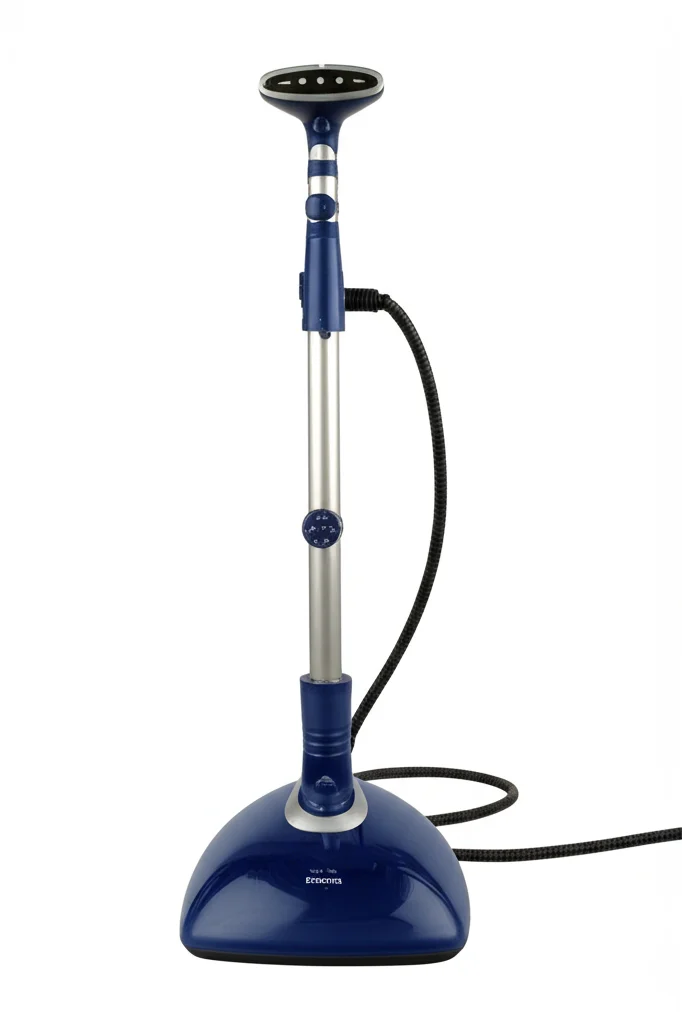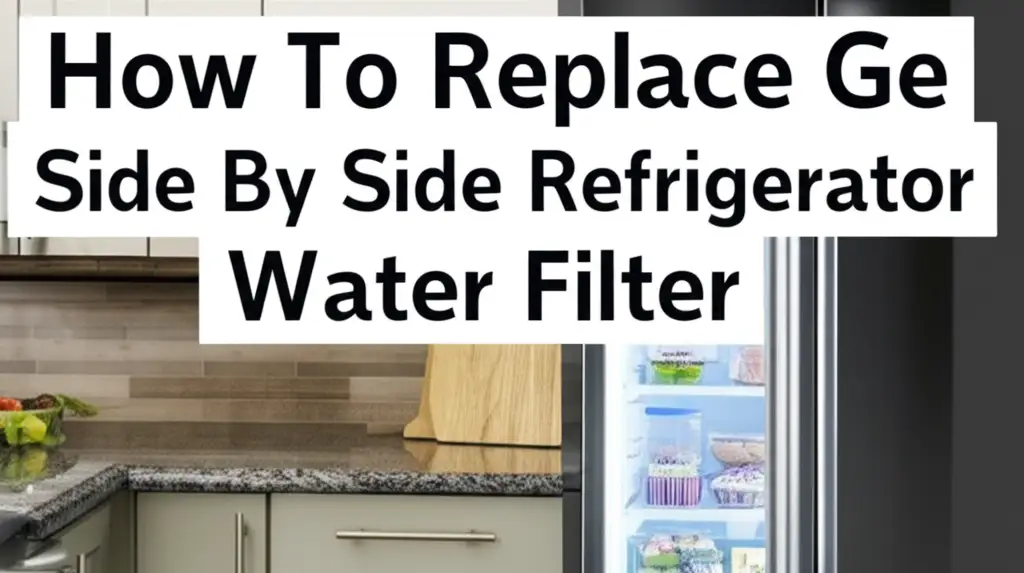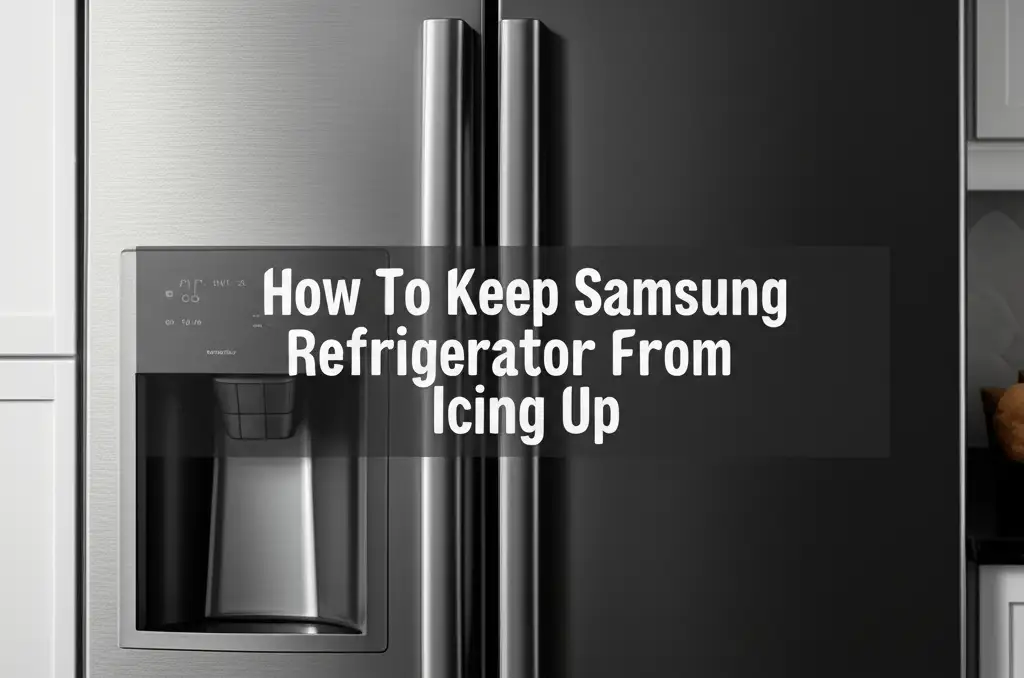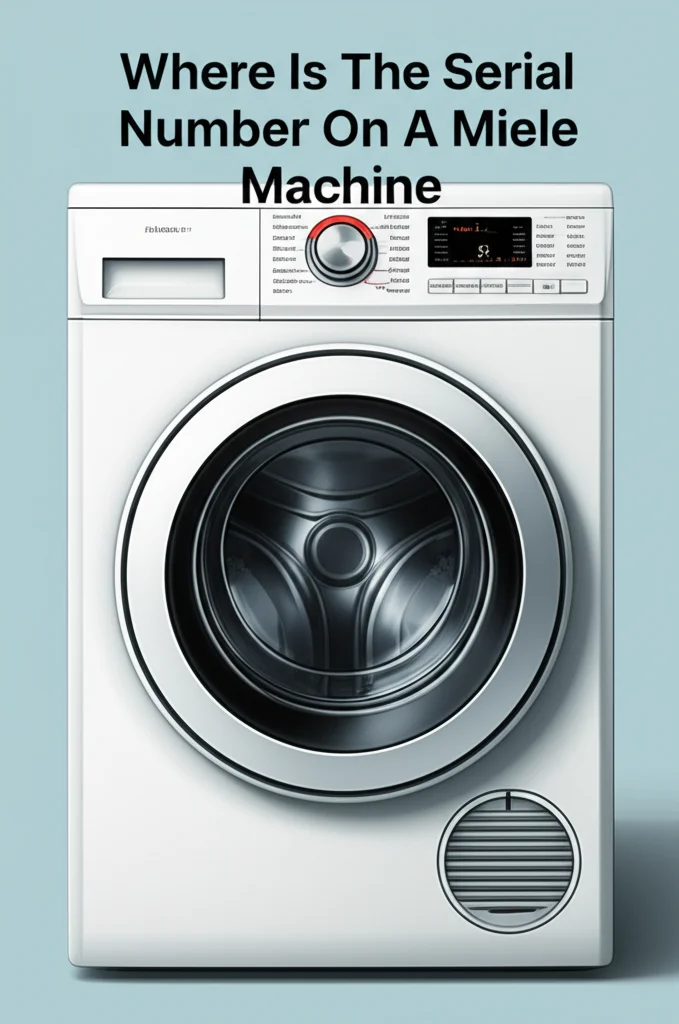· Todd Martin · Appliance Maintenance · 22 min read
How To Clean Rowenta Steamer

Unlock the Power: How to Clean Your Rowenta Steamer for Peak Performance
A Rowenta steamer brings wrinkle-free clothing and fresh fabrics into your home with ease. This powerful tool relies on steam to smooth out creases, making it a favorite for many. However, over time, mineral deposits from tap water can build up inside. This buildup impacts performance and can shorten your steamer’s lifespan.
Learning how to clean Rowenta steamer is essential for maintaining its efficiency. Regular cleaning prevents frustrating issues like spitting water, reduced steam output, or even a complete breakdown. This article will guide you through simple steps to descaling and cleaning your Rowenta steamer. You will discover the necessary tools, detailed methods for removing mineral buildup, and tips for ongoing maintenance. Keeping your steamer in top condition ensures it continues to deliver perfect results every time you use it. We will make sure your steaming experience stays smooth and effective.
Takeaway:
- Regularly clean your Rowenta steamer to prevent mineral buildup and maintain optimal performance.
- Use distilled water to significantly reduce scale formation in your steamer.
- Descaling with white vinegar is an effective and safe method for most Rowenta models.
- Always unplug your steamer and allow it to cool completely before starting any cleaning process.
- Clean both the internal components and external steam head for comprehensive maintenance.
To clean a Rowenta steamer, empty the water tank first. Then, fill it with a solution of half distilled water and half white vinegar. Turn on the steamer and let it run until half the solution is gone. Unplug it, let it cool, and drain the remaining solution. Finally, rinse thoroughly with distilled water.
Understanding Your Rowenta Steamer and Why Cleaning Matters
Your Rowenta steamer is a household hero, transforming wrinkled fabrics into smooth, presentable garments. It achieves this with powerful, consistent steam. The steam comes from water heated inside the unit. But here is the thing: the type of water you use directly affects its long-term health. Over time, hard water leaves behind mineral deposits. This is just like what happens in a kettle or a coffee maker.
These mineral deposits, often called scale or lime scale, accumulate inside the steamer’s heating element and water channels. This buildup creates several problems. It can block the internal pipes, reducing steam output. It can also cause the steamer to sputter or spit water, leaving marks on your clothes. Ultimately, this scale shortens the life of your appliance. Knowing how to properly clean Rowenta steamer prevents these issues. This simple maintenance ensures your steamer works effectively for years to come.
The Problem of Mineral Buildup
Mineral buildup is the biggest enemy of your Rowenta steamer. Tap water contains dissolved minerals like calcium and magnesium. When water heats up, these minerals separate and cling to surfaces. Inside your steamer, they form a hard, crusty layer. This layer restricts water flow and reduces the heating element’s efficiency. Imagine trying to breathe through a clogged nose; your steamer feels the same way.
A heavy mineral buildup can also lead to uneven steam distribution. This means some areas of your clothes might not get enough steam. This leads to frustrating, still-wrinkled spots. Regular cleaning, specifically descaling, removes this buildup. This restores your steamer to its peak condition. It is a vital step in maintaining any steam-generating appliance.
Signs Your Steamer Needs Cleaning
Your Rowenta steamer often tells you when it needs attention. Pay attention to these common indicators. Reduced steam output is a primary sign. If your steamer is not producing as much steam as before, mineral buildup is likely the cause. Another clear sign is sputtering or spitting water. This happens when water gets trapped or pushed through narrow, clogged pathways.
You might also notice white flakes or mineral residue on your clothes after steaming. This indicates that scale is breaking off and exiting through the nozzle. Unusual noises, like gurgling or straining, can also signal internal blockages. If you observe any of these symptoms, it is time to perform a thorough Rowenta steamer cleaning. Acting quickly can prevent more serious damage.
Types of Water to Use for Optimal Performance
The water you use makes a significant difference in how often you need to clean your steamer. Tap water, especially if you live in an area with hard water, is the main culprit for mineral buildup. Many Rowenta models recommend using distilled or demineralized water. This type of water has had its minerals removed, virtually eliminating the risk of scale formation. I always use distilled water in my steamer now. It truly extends the time between deep cleans.
If you cannot always use distilled water, a mix of tap water and distilled water can help. Some modern Rowenta steamers are designed to handle tap water, but even these benefit from occasional descaling. Always check your steamer’s user manual for specific recommendations on water type. Using the right water from the start is the easiest way to prevent future cleaning headaches. This small step saves you a lot of effort later on. Understanding water quality also helps when learning how to clean a water filter or other household water-using appliances.
Essential Tools and Preparations for Rowenta Steamer Cleaning
Before you begin the process of cleaning your Rowenta steamer, gather all the necessary tools. Having everything ready saves time and ensures a smooth cleaning experience. You will not need many items, and most are likely already in your home. Preparation is key to effective Rowenta steamer cleaning. Taking a few moments to set up properly makes the entire task much simpler.
This section will detail the essential items you need and important safety precautions. These steps are crucial for protecting both yourself and your appliance. A well-prepared cleaning session leads to better results and a longer-lasting steamer.
Gathering Your Cleaning Arsenal
For an effective Rowenta steamer cleaning, you will need a few simple supplies. The main ingredient is white vinegar. This household staple is an excellent natural descaler. You will also need distilled water. This is essential for both the cleaning solution and for rinsing your steamer afterward. A measuring cup helps you get the right proportions.
You will also need a clean cloth or sponge for wiping external surfaces. Cotton swabs or a soft brush can help clean the steam head and nozzle openings. A basin or sink is necessary for draining the solutions. Finally, a small funnel can be helpful for pouring liquids into the water tank without spills. With these basic items, you are ready to tackle mineral buildup.
Safety First: Before You Begin
Safety is paramount when cleaning any electrical appliance. Always ensure your Rowenta steamer is completely unplugged from the power outlet before you start. This prevents any accidental activation or electrical shock. Also, allow your steamer to cool down fully. Hot components can cause burns, and residual steam can be dangerous. I always wait at least an hour after my last use.
Ensure you work in a well-ventilated area, especially when using vinegar. Vinegar has a strong smell that can be irritating in confined spaces. Keep children and pets away from your cleaning area. Following these safety precautions ensures a safe and effective steamer cleaning process. These simple steps protect you and extend the life of your appliance.
Preparing Your Steamer for Cleaning
Once you have your tools and have addressed safety, prepare the steamer itself. First, empty any remaining water from the tank. You can usually do this by removing the tank and pouring out the water. For models with non-removable tanks, there might be a drain plug at the bottom. Consult your user manual for specific draining instructions.
Next, remove any attachments like the fabric brush or crease tool. These attachments might have their own cleaning needs. Wipe them down with a damp cloth if they appear dirty. Ensure the steamer’s water tank and any internal components are completely empty before adding the cleaning solution. This step clears the way for the descaling process. This also helps with cleaning many household items. For example, knowing how to prepare surfaces is also key when how to clean stainless steel appliances.
Step-by-Step Descaling Your Rowenta Garment Steamer
Descaling is the core of Rowenta steamer cleaning. This process removes the mineral buildup that can clog your appliance and reduce its effectiveness. The most common and effective method uses a simple solution of white vinegar and distilled water. This natural approach is safe for most steamers and highly efficient at dissolving lime scale. Follow these steps carefully to ensure a thorough descaling. This will restore your steamer’s powerful steam output and prolong its life.
The Vinegar Descaling Method
White vinegar is your best friend for descaling. It is an acid that breaks down mineral deposits. Start by mixing equal parts of white vinegar and distilled water. For example, if your tank holds 1 liter, use 500ml of vinegar and 500ml of distilled water. Pour this solution into your Rowenta steamer’s water tank. Do not overfill it; leave some space, especially if your steamer is smaller.
Place the steamer in a safe area, like a laundry room sink or bathtub, where water can drain freely. Turn the steamer on and let it heat up. Allow it to produce steam until about half of the solution has been used. This circulates the vinegar through the internal components, dissolving the scale. My steamer always starts producing steam more vigorously at this stage. It is satisfying to see it working again.
Once about half the solution is gone, turn off the steamer and unplug it immediately. Let it sit for at least 30 minutes to an hour. For heavy buildup, you can let it sit for a few hours or even overnight. This soaking time allows the vinegar to work its magic on stubborn deposits. This method is similar to how you might use vinegar to clean stubborn deposits elsewhere, such as when learning how to clean a shower with vinegar or even when trying to clean how to clean glass with vinegar around the house.
Thorough Rinsing for Best Results
After the soaking period, you must thoroughly rinse your Rowenta steamer. This step is crucial to remove any leftover vinegar smell and dislodged mineral particles. First, carefully drain any remaining vinegar solution from the water tank. Follow your steamer’s specific draining instructions. This usually involves removing the tank or opening a drain plug.
Next, fill the water tank with fresh distilled water. Operate the steamer until the entire tank of distilled water is used up. Direct the steam into a sink or a bucket. This flushing action pushes out any residual vinegar and mineral flakes. Repeat this rinsing process at least two to three times with fresh distilled water. You want to ensure no vinegar smell or cloudy water remains. Running it through until the water is clear and the smell is gone is key.
My personal experience shows that a good rinse makes a big difference. If you skip this, your clothes might smell faintly of vinegar. This thorough rinse ensures your steamer is ready for use. It will produce clean, odorless steam for your garments. This attention to detail contributes to a perfect Rowenta steamer cleaning. This detailed rinsing process is a general rule for many appliances that use vinegar for cleaning, similar to cleaning how to clean a dishwasher with vinegar.
Cleaning the Steamer Head and Nozzle
While internal descaling is vital, don’t forget the exterior of your Rowenta steamer, especially the steam head and nozzle. These parts are constantly exposed to steam and water. They can also accumulate mineral deposits and lint from fabrics. A clean steam head ensures even steam distribution and prevents unwanted marks on your clothes. This external cleaning is an important part of a complete Rowenta steamer cleaning routine. It keeps your appliance looking good and performing efficiently.
Tackling Stubborn Nozzle Buildup
The nozzle is where the steam exits. It can get clogged with small mineral flakes or fabric fibers. If you notice steam coming out unevenly or a reduced flow, the nozzle likely needs attention. First, ensure the steamer is cool and unplugged. Use a cotton swab dipped in white vinegar to gently clean around the nozzle openings. The vinegar helps to dissolve any stubborn mineral deposits.
For more persistent clogs, a toothpick or a small, soft-bristled brush can carefully dislodge debris. Be extremely gentle. Do not use anything sharp or metallic that could damage the nozzle. I find a soft toothbrush works well for scrubbing the surface. Wipe away any loosened debris with a clean, damp cloth. A clean nozzle ensures maximum steam power. This part of the steamer cleaning prevents steam blockages. It is similar to ensuring a clean heating element when you how to clean a clothes iron.
Maintaining the Steamer Head Surface
The larger surface of the steam head can also develop mineral residue or water spots. After descaling the interior, the steam head itself might still look dull. To clean the steam head, use a soft, damp cloth. You can slightly dampen it with distilled water or a very dilute vinegar solution. Gently wipe down the entire surface. Avoid using abrasive cleaners or scouring pads. These can scratch or damage the finish.
For any stubborn spots, a paste made of baking soda and a little water can be gently applied. Let it sit for a few minutes, then wipe it off with a damp cloth. Make sure to wipe thoroughly to remove all baking soda residue. A clean steam head ensures smooth gliding over fabrics. This also prevents water marks on your garments. This attention to the surface is a finishing touch for your Rowenta steamer cleaning. It keeps your steamer looking as good as new.
Cleaning Steamer Attachments
Many Rowenta steamers come with various attachments like fabric brushes, lint pads, or creasing tools. These attachments also need regular cleaning. They can collect lint, dust, and fabric softener residue. After each steaming session, remove the attachments from the steamer. Use a lint roller or a stiff brush to remove any accumulated lint or fibers from fabric brushes.
For plastic attachments, you can wash them gently with warm soapy water. Rinse them thoroughly with clean water. Make sure they are completely dry before reattaching them to the steamer or storing them. Damp attachments can harbor mold or mildew. Proper cleaning of attachments ensures they remain effective. It also prevents the transfer of dirt or lint to your freshly steamed clothes. This step completes your comprehensive steamer cleaning routine.
Draining and Storing Your Rowenta Steamer Properly
Proper draining and storage are just as important as descaling for your Rowenta steamer’s longevity. Neglecting these steps can lead to faster mineral buildup and even mold growth. A little care after each use goes a long way in maintaining your appliance. It ensures it remains ready for action whenever you need it. This section focuses on best practices for after-use care.
The Importance of Emptying the Water Tank
Never leave water sitting in your Rowenta steamer’s tank, especially if you use tap water. Stagnant water is a breeding ground for mineral deposits. These deposits harden and cling to the internal components. This accelerates the need for future descaling. Even distilled water, if left for extended periods, can foster mold or mildew growth. This can lead to unpleasant odors.
After every steaming session, always empty the water tank completely. Most Rowenta models have a removable tank for easy draining. For models with non-removable tanks, they usually include a drain plug at the bottom. Consult your user manual for specific instructions. Draining the tank prevents scale formation and keeps the internal system dry. This simple habit dramatically extends the life and efficiency of your steamer. It is an easy win for Rowenta steamer cleaning longevity.
Optimal Storage Practices
Once you have drained the water, allow your steamer to cool down completely. Then, wipe down the exterior with a clean, dry cloth. Ensure all parts, including attachments, are dry before storage. Store your Rowenta steamer in a cool, dry place. Avoid storing it in areas with high humidity, such as bathrooms, which can encourage mold growth.
Keep the steamer upright if possible, to prevent any residual water from leaking. If your model has a collapsible pole or a compact design, fold it down carefully. Store all attachments together with the steamer to avoid losing them. Proper storage protects your appliance from dust and physical damage. It also keeps it ready for its next use. Following these storage tips is a vital component of long-term steamer cleaning and maintenance. It helps maintain the quality of your appliance, much like knowing how to keep any part of your home tidy, such as when learning how to clean under a refrigerator.
Preventing Future Buildup
The best way to reduce the frequency of deep descaling is to prevent mineral buildup from the start. As mentioned earlier, using distilled or demineralized water is the most effective preventative measure. Distilled water contains no minerals, so it leaves no residue behind. This dramatically slows down the rate of scale formation inside your steamer. While it might be a small extra cost, it saves you time and effort in cleaning.
Additionally, always empty the water tank after each use. Even if you use distilled water, emptying the tank ensures no stagnant water sits inside. Regularly wiping down the steam head and nozzle also helps. These small habits reduce the need for intensive Rowenta steamer cleaning. They keep your appliance working at its best with minimal effort. Prevention truly is easier than the cure when it comes to mineral scale.
Troubleshooting Common Steamer Cleaning Issues
Even with regular cleaning, you might encounter issues with your Rowenta steamer. Sometimes, despite your best efforts, the steamer might not perform as expected. This section addresses common problems that arise even after cleaning. We will offer solutions to help you get your steamer back on track. Understanding these troubleshooting steps can save you a trip to the repair shop. It helps you maximize your Rowenta steamer cleaning efforts.
Persistent Buildup Solutions
If your steamer still has weak steam or spits water after a thorough vinegar descaling, you might have very stubborn or extensive mineral buildup. In such cases, a single descaling cycle might not be enough. Try repeating the vinegar descaling process two or even three times. Each cycle helps to dissolve more of the hardened scale. For extremely tough cases, you might consider letting the vinegar solution soak for several hours or overnight during the resting phase.
Another option is to use a commercial descaling solution specifically designed for steam appliances. Always ensure the product is safe for your steamer type and follow the manufacturer’s instructions carefully. These solutions are often more potent than vinegar. They can tackle very heavy scale. Remember to rinse the steamer even more thoroughly after using a commercial cleaner. This ensures no chemical residue remains. Persistent issues require persistent solutions. This focus on deep cleaning is important, just like knowing how to handle tough stains when learning how to clean black grout.
Steamer Not Producing Steam After Cleaning
It can be frustrating when your steamer does not produce steam after you have just cleaned it. First, double-check that the water tank is filled to the correct level. Sometimes, a low water level can prevent proper steam generation. Ensure the steamer is fully heated up; some models take a few minutes to reach operating temperature. The “ready” indicator light should be on.
If it still does not work, check for any visible clogs in the steam nozzle. Use a small brush or toothpick to clear any blockages. Also, ensure the power cord is securely plugged in and the outlet is working. If the problem persists, the heating element might be damaged. Or, there could be an internal electrical issue. At this point, the problem goes beyond simple steamer cleaning.
When to Seek Professional Help or Replace
There are times when a steamer issue is beyond DIY cleaning or troubleshooting. If your Rowenta steamer is not producing any heat, or if it trips your circuit breaker, there is likely an electrical fault. These issues require professional attention. Do not attempt to repair electrical components yourself. This can be dangerous. If your steamer is leaking water from places other than the steam head, this could indicate a cracked water tank or a faulty seal.
Consider the age of your steamer. If it is an older model and consistently gives you trouble even after cleaning, it might be time for a replacement. Sometimes the cost of repairs outweighs the cost of a new, more efficient model. Rowenta provides customer support and repair services. Contact them if you suspect a manufacturing defect or a complex issue. Knowing when to get help or buy new is part of smart appliance ownership.
Preventive Maintenance for a Long-Lasting Rowenta Steamer
The best way to keep your Rowenta steamer working perfectly is to practice regular preventive maintenance. A consistent care routine reduces the need for extensive cleaning and troubleshooting. It also significantly extends the life of your appliance. Think of it like taking care of your car; regular oil changes prevent major engine problems down the line. Applying these simple habits to your steamer ensures it remains a reliable tool for years.
The Distilled Water Advantage
Using distilled water is the single most impactful preventive measure you can take. Tap water, even if it does not feel “hard,” contains dissolved minerals. These minerals accumulate inside your steamer over time, forming scale. Distilled water, on the other hand, has had these minerals removed. This means there is no mineral content to deposit as scale.
By consistently using distilled water, you dramatically reduce mineral buildup. This minimizes the frequency of descaling treatments. It also helps your steamer maintain consistent steam output. This simple switch saves you time and effort in cleaning. It protects the internal components from corrosive scale. I cannot stress enough how much this helps prolong the life of your Rowenta steamer. It is the foundation of good steamer cleaning habits. It’s similar to the benefits of using filtered water in other household appliances, like when learning about how to clean a coffee filter.
Establishing a Cleaning Schedule
Even with distilled water, a light cleaning schedule is beneficial. For regular users, a quick rinse after every few uses is a good habit. You can fill the tank with plain distilled water and run it through. This flushes out any minor residues. For a deeper clean, descaling with vinegar every 3-6 months is generally recommended. Adjust this frequency based on your usage and the type of water you sometimes use.
If you use tap water regularly, consider descaling once a month. Light users might get away with descaling once a year. Pay attention to the signs your steamer gives you, like reduced steam or spitting water. These signals tell you it is time for a more thorough Rowenta steamer cleaning. A consistent schedule prevents small problems from becoming big ones.
Daily Habits for Longevity
Beyond water choice and scheduled descaling, a few daily habits contribute to your steamer’s longevity. Always empty the water tank completely after each use. Never leave stagnant water in the reservoir. This prevents mineral deposits from drying and hardening inside. Also, wipe down the exterior of the steamer after each use with a soft, dry cloth. This removes any water spots or lint.
When you finish steaming, allow the steamer to cool down completely before storing it. Store it in an upright position in a dry, safe place. Proper storage prevents accidental damage and ensures the internal components dry out properly. These simple daily routines require minimal effort. They go a long way in ensuring your Rowenta steamer performs optimally for many years. Consistent care is the key to maintaining your appliance.
FAQ Section
Can I use tap water in my Rowenta steamer?
Many Rowenta steamers can technically use tap water, especially newer models. However, tap water contains minerals that cause scale buildup over time. This buildup reduces efficiency and shortens your steamer’s life. For best performance and to minimize cleaning, it is highly recommended to use distilled or demineralized water. Check your specific model’s manual for its water recommendations.
How often should I clean my Rowenta steamer?
The cleaning frequency depends on your usage and water type. If you use distilled water regularly, descaling every 3-6 months is usually sufficient. If you use tap water, especially hard water, you might need to descale monthly or every two months. Look for signs like reduced steam output or spitting water as indicators that cleaning is needed.
What if my steamer still isn’t steaming after cleaning?
First, check if the water tank is adequately filled and the steamer is fully heated. Ensure the nozzle is clear of any visible blockages. If problems persist, it might indicate a more serious issue like a faulty heating element or an internal electrical problem. In such cases, contact Rowenta customer support or a qualified technician for assistance.
Can I use commercial descaling solutions?
Yes, you can use commercial descaling solutions designed for steam appliances. Always read the product instructions carefully to ensure it is safe for your specific Rowenta model. These solutions can be more potent than vinegar and might be necessary for very heavy mineral buildup. Always follow up with several thorough rinses using distilled water to remove all chemical residues.
What is the best way to store my steamer?
After each use, empty the water tank completely and allow the steamer to cool down. Wipe down the exterior and attachments. Store your Rowenta steamer upright in a cool, dry place. Avoid humid environments. Proper storage prevents residual water from causing mineral deposits and protects the appliance from dust and physical damage.
Is it normal for a Rowenta steamer to leak water?
A small amount of condensation around the steam head is normal. However, if your Rowenta steamer is consistently leaking large amounts of water from the nozzle or other parts, it usually indicates a problem. This might be due to excessive mineral buildup blocking steam flow, improper heating, or a faulty seal. Regular cleaning can often resolve nozzle leaks, but other leaks might need professional repair.
- steamer cleaning
- Rowenta maintenance
- descaling steamer
- mineral buildup removal
- garment steamer care
- appliance longevity





